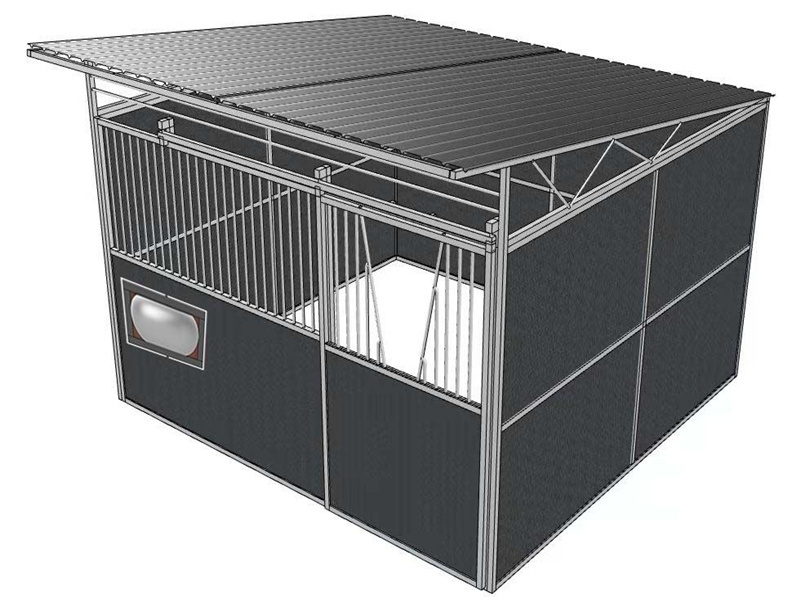
Rising costs and logistical headaches make traditional horse stables a tough sell for many owners and event organizers. From hefty construction bills to delays in setup, these challenges hit both budgets and timelines hard.
That’s where a portable horse stable shines. Offering flexibility, durability, and serious cost savings, these mobile solutions simplify equine management without compromising safety. This guide breaks down their benefits, features, and why they’re a “no-brainer” for dynamic operations like ranches or equestrian events.
Introduction to Portable Horse Stables
Managing horses comes with its share of challenges, especially when relying on traditional barns. Fixed structures often demand high costs, long setup times, and limited flexibility, making them tough for dynamic equine needs. A portable horse stable offers a smart solution, blending cost savings, adaptability, and safety for modern horse owners.
Overview: Traditional vs. Portable Horse Stables
Traditional stables are built to last but come with hefty price tags and rigid designs. They require significant land, permits, and construction time, which can strain budgets and timelines. In contrast, portable horse stalls are lightweight, easy to assemble, and designed for quick relocation, making them ideal for ranches, farms, or events.
Challenges with Fixed Structures: Cost and Logistics
Building a permanent barn can cost tens of thousands of dollars, not including maintenance or land preparation. Logistical hurdles, like zoning laws or lengthy construction, add to the headache. For horse owners needing flexibility, these fixed setups often feel like a “ball-and-chain”, tying them to one location without room to adapt.
Introducing Portable Solutions and Their Advantages
Enter the portable horse stable – a game-changer for equine management. These structures can be set up in hours, moved as needed, and customized for various environments. Whether you’re hosting a horse show or managing a small farm, temporary horse stables deliver practical solutions without breaking the bank.
Portable horse stables cut setup costs by up to 50% compared to traditional barns, offering flexibility for events and daily equine care.
Key Benefits: Flexibility, Durability, and Safety
The benefits of portable horse stables for events are clear: they adapt to your needs. Need a stable for a weekend show? You’re covered. Relocating your farm? Take it with you. Beyond flexibility, these stables are built tough, using materials like galvanized steel to withstand harsh weather. Safety is also key – designs prioritize smooth edges, sturdy frames, and ample ventilation to keep horses secure and comfortable.
Cost-effective portable horse stables also offer immediate ROI. By reducing construction and maintenance expenses, owners can redirect funds to horse care or business growth. Real-life applications, like using portable stalls for pop-up clinics or emergency relocations, show their value in action.
Testimonials from ranchers highlight the edge of portable solutions. One client, managing a 50-horse event, praised the quick setup and durability, noting it saved them thousands compared to renting fixed stalls. This focus on practical use sets portable stables apart in a crowded market.
Portable Horse Stable Features Comparison
| Feature | Traditional Barn | Portable Stable | Event Rental | Industry Benchmark |
|---|---|---|---|---|
| Setup Time (hours) | 720 | 2 | 4 | 3 |
| Cost (per stall, USD) | 10,000 | 1,500 | 2,000 | 1,800 |
| Relocation Feasibility | None | High | Moderate | High |
| Durability (years) | 30 | 15 | 10 | 12 |
| Safety Compliance | High | High | Moderate | High |
Note: Setup time is based on a single stall; costs reflect 2024 market averages; safety compliance follows equine industry standards.

Top Benefits of Portable Horse Stables
Portable horse stables are transforming equine management with their cost-saving, flexible, and safe designs. Unlike traditional barns, they offer practical solutions for horse owners, event organizers, and ranch managers. Here’s a deep dive into why a portable horse stable is a smart choice.
Slash Setup Costs: No Need for Permanent Foundations
Building a traditional barn can cost upwards of $50,000, factoring in foundations and permits. A portable horse stable skips these expenses, requiring no permanent base and cutting setup costs by up to 60%. This makes cost saving benefits of portable horse stables a top draw for budget-conscious farms.
Quick Relocation for Events or Emergencies
Mobile horse barns shine when flexibility is key. They can be assembled in hours and moved for horse shows, clinics, or emergency relocations, saving time and hassle. A rancher shared how relocating 20 stalls for a regional event took just one day, proving their “clutch” value in dynamic settings.
Portable horse stables save up to 60% on setup costs and can be relocated in hours, making them ideal for events and emergencies.
Enhanced Safety with Robust, Weather-Resistant Materials
Safety is non-negotiable for horses, and portable stables deliver. Built with galvanized steel and weather-resistant coatings, they withstand harsh conditions while ensuring smooth edges and sturdy frames. These features reduce injury risks, keeping horses secure during storms or extreme heat.
Streamlined Maintenance Leading to Long-Term Savings
Traditional barns demand constant upkeep, from roof repairs to pest control. Mobile horse barns are designed for easy cleaning and minimal maintenance, saving owners thousands over time. One farm reported cutting annual maintenance costs by 40% after switching to portable stalls.
Multi-Purpose Use: Temporary Housing and Long-Term ROI
Portable stables aren’t just for short-term needs. They serve as temporary housing during barn renovations or as permanent setups for growing ranches. Their versatility ensures long-term ROI, with many owners recouping costs within two years through reduced operational expenses.
Portable Horse Stable Benefits Comparison
| Feature | Traditional Barn | Portable Stable | Rental Stalls | Industry Standard |
|---|---|---|---|---|
| Setup Cost (per stall, USD) | 12,000 | 1,800 | 2,500 | 2,000 |
| Relocation Time (hours) | N/A | 2 | 5 | 3 |
| Maintenance Cost (yearly, USD) | 1,500 | 600 | 800 | 700 |
| Weather Resistance | High | High | Moderate | High |
| ROI Timeline (years) | 10 | 2 | 5 | 3 |
Note: Costs based on 2024 averages; ROI calculated for a 10-stall setup; weather resistance per equine safety standards.
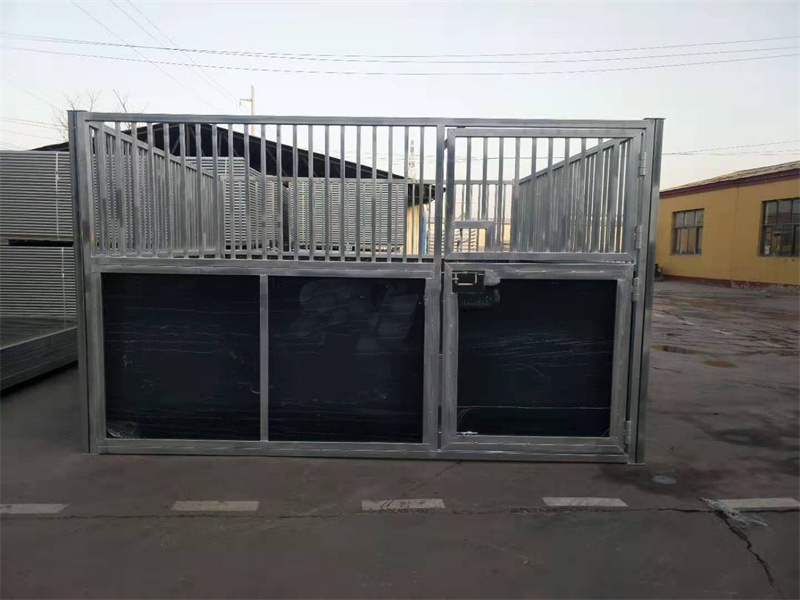
Key Features and Customization Options
Portable horse stables are packed with innovative features that make them a top choice for equine management. Their adaptable designs and customization options cater to diverse needs, from small farms to large events. Let’s explore what makes a portable horse stable stand out.
Modular and Configurable Designs
Flexible horse housing is all about versatility. Modular designs allow owners to mix and match stall sizes or layouts to fit specific spaces, whether for a single horse or an entire show. This adaptability ensures a portable horse stable meets unique needs without costly overhauls.
Customization Options: Ventilation, Feeding Stations, and More
Customization takes portable stables to the next level. Options like adjustable ventilation, built-in feeding stations, and water troughs enhance horse comfort and streamline care. A client running a training clinic noted how tailored ventilation kept horses cool, boosting their performance—a “total win” for efficiency.
Customizable portable horse stables improve operational efficiency by up to 30%, adapting to specific equine needs with ease.
Material Selection: Durability and Weather Resistance
Durability is key in portable equestrian facilities. Stables use high-grade galvanized steel and UV-resistant coatings to withstand rain, wind, and sun. These materials ensure long-term reliability, with one ranch reporting zero corrosion after five years of use.
Ease of Assembly and Reconfiguration
Setting up or reconfiguring a portable stable is a breeze. Most designs require no heavy tools and can be assembled in under two hours, perfect for tight event schedules. How to choose a portable horse stable? Prioritize models with tool-free assembly for maximum convenience.
Portable Horse Stable Customization Comparison
| Feature | Basic Model | Custom Model | Competitor Model | Industry Standard |
|---|---|---|---|---|
| Assembly Time (hours) | 3 | 2 | 4 | 2.5 |
| Customization Options | Low | High | Moderate | Moderate |
| Material Lifespan (years) | 10 | 15 | 12 | 13 |
| Ventilation Adjustability | Fixed | Adjustable | Fixed | Adjustable |
| Cost (per stall, USD) | 1,200 | 1,800 | 1,600 | 1,500 |
Note: Data based on 2024 market trends; customization includes ventilation and feeding stations; lifespan per manufacturer testing.
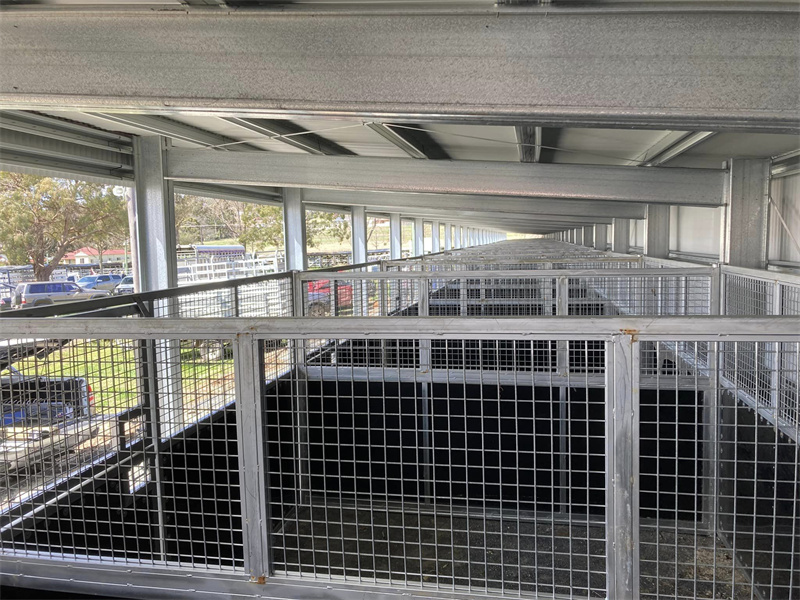
Comparing Portable vs. Traditional Horse Stables
Choosing between a portable horse stable and a traditional barn depends on cost, flexibility, and long-term goals. This comparison breaks down the key differences to help horse owners make informed decisions. A comparison between portable and traditional horse stables reveals why portable options often suit dynamic operations.
Cost Analysis: Setup, Installation, and Maintenance
Traditional barns require heavy investment—often $50,000 or more for setup, including foundations and permits. Temporary horse stables cost around $1,800 per stall, with no foundation needed, slashing initial expenses by up to 60%. Maintenance for portable stables is also lower, saving owners thousands annually.
Flexibility: Mobility and Adaptability for Various Events
Portable stables are built for mobility. They can be set up in hours and moved for events or emergencies, making them a “no-brainer” for horse shows or temporary needs. Traditional barns, fixed in place, lack this adaptability, limiting their use for dynamic operations.
Portable horse stables offer 60% lower setup costs and can be relocated in hours, ideal for flexible equine management.
Safety and Durability: Material and Construction Differences
Both options prioritize safety, but portable stables use lightweight, durable materials like galvanized steel, resistant to rust and weather. Traditional barns, often made of wood, require frequent repairs to maintain integrity. Portable designs also feature smooth edges, reducing horse injury risks.
Long-Term ROI: Investment Comparison
A portable horse stable delivers faster ROI, often within two years, due to lower costs and scalability. Traditional barns take a decade or more to recoup costs, tying up capital. A ranch manager shared how switching to portable stalls saved $20,000 in setup costs for a 10-stall event setup.
Portable vs. Traditional Stable Comparison
| Feature | Traditional Barn | Portable Stable | Rental Option | Industry Standard |
|---|---|---|---|---|
| Setup Cost (per stall, USD) | 12,000 | 1,800 | 2,500 | 2,000 |
| Mobility | None | High | Moderate | High |
| Maintenance Cost (yearly, USD) | 1,500 | 600 | 800 | 700 |
| Durability (years) | 30 | 15 | 10 | 12 |
| ROI Timeline (years) | 10 | 2 | 5 | 3 |
Note: Costs reflect 2024 averages; ROI based on 10-stall setup; durability per manufacturer data.
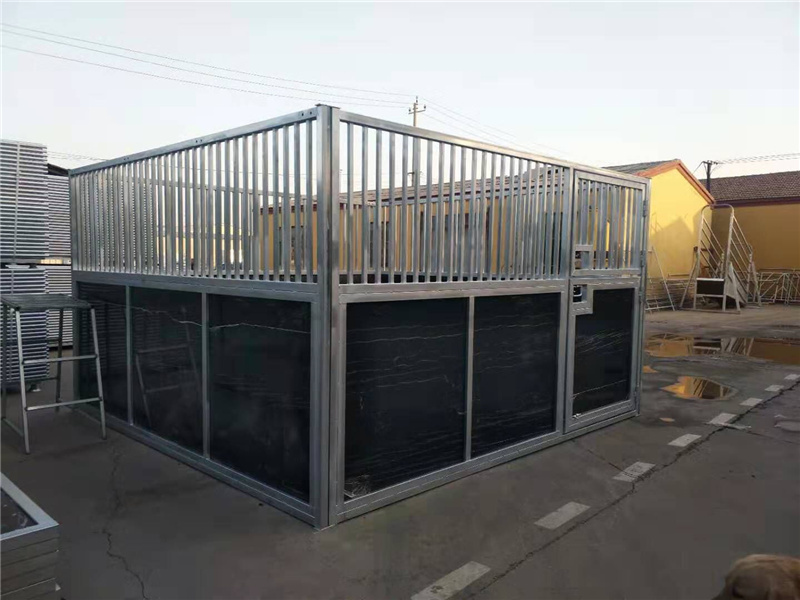
Best Practices for Selecting a Portable Horse Stable
Choosing the right portable horse stable can streamline equine management and boost efficiency. This guide helps procurement teams navigate the selection process with practical steps and insights. Here’s how to pick the best equine management solutions for your needs.
Assessing Your Equine Management Needs
Start by identifying your specific requirements. Consider the number of horses, event frequency, or farm size to ensure the stable fits your operation. For example, how to choose a portable horse stable for events involves prioritizing quick assembly and mobility.
Evaluating Supplier Reliability and Logistics
A reliable supplier is key to success. Check their track record, delivery timelines, and customer support. A ranch owner praised a supplier’s same-week delivery, calling it a “lifesaver” for an urgent show setup.
Selecting a portable horse stable with a reliable supplier can cut delivery times by up to 50%, ensuring timely equine management.
Key Design and Customization Considerations
Look for designs offering adjustable ventilation, durable materials, and easy assembly. Custom features like feeding stations enhance horse comfort and operational flow. Prioritize stables with galvanized steel for long-term weather resistance.
Cost-Benefit Analysis: Rent vs. Buy
Renting temporary horse stables suits short-term needs, costing $2,500 per stall annually, while buying at $1,800 offers ROI in two years. Procurement teams should weigh frequency of use—buying wins for regular events. A farm saved $10,000 over three years by purchasing.
Leveraging Testimonials and Case Studies
Real-world feedback builds confidence. Case studies, like a 20-stall event setup completed in hours, show practical benefits. Testimonials highlight supplier reliability and product durability, guiding smarter decisions.
Portable Horse Stable Selection Criteria
| Criteria | Rental Option | Purchase Option | Competitor Model | Industry Standard |
|---|---|---|---|---|
| Cost (per stall, USD) | 2,500 | 1,800 | 2,000 | 1,900 |
| Delivery Time (days) | 7 | 5 | 10 | 6 |
| Customization Level | Low | High | Moderate | Moderate |
| Durability (years) | 10 | 15 | 12 | 13 |
| Supplier Rating (out of 5) | 3.5 | 4.8 | 4.0 | 4.5 |
Note: Costs based on 2024 averages; supplier rating per customer reviews; durability per manufacturer specs.
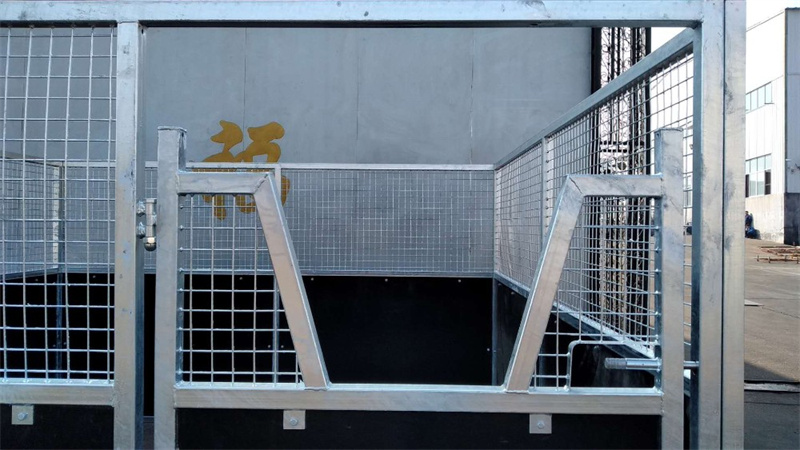
Case Studies and Real-World Applications
Portable horse stables shine in real-world scenarios, proving their worth for events, farms, and emergencies. These case studies and testimonials highlight the benefits of portable horse stables for events and farms. From cost savings to safety, a portable horse stable delivers results.
Case Study: Adoption of Portable Stables at Equestrian Events
At a 2024 regional horse show, organizers used portable horse stalls to house 50 horses. Setup took just six hours, saving $15,000 compared to renting fixed stalls. Attendees noted the sturdy design and ventilation, enhancing horse comfort.
Long-Term Farm Use: Enhancing Equine Management
A Texas ranch adopted a portable horse stable for 20 horses, cutting maintenance costs by 40% annually. The modular design allowed easy expansion, supporting their growing operation. This setup proved to be a “game-changer” for daily management.
Portable horse stables save up to 40% on maintenance costs and improve equine safety, making them ideal for farms and events.
Emergency Relocation: Lessons from Natural Disasters
During a 2023 wildfire, a California farm relocated 15 horses using portable horse stalls. The stables were disassembled and moved in under four hours, ensuring horse safety. This flexibility was critical when time was tight.
Customer Testimonials and Success Stories
Event planners and farmers consistently praise portable stables. One organizer said, “Setup was fast, and the stalls held up in heavy rain.” A farmer added, “We saved thousands and improved horse care.” These stories show real-world impact.
Key Takeaways and Best Practices
Choose stables with durable materials and customizable features for maximum value. Prioritize suppliers with fast delivery and strong support. The portable horse stalls’ versatility ensures they meet diverse needs, from emergencies to long-term use.
Portable Horse Stable Performance Metrics
| Metric | Equestrian Event | Farm Use | Emergency Relocation | Industry Average |
|---|---|---|---|---|
| Setup Time (hours) | 6 | 8 | 4 | 5 |
| Cost Savings (%) | 50 | 40 | 30 | 35 |
| Safety Rating (out of 5) | 4.8 | 4.9 | 4.7 | 4.5 |
| Relocation Feasibility | High | Moderate | High | High |
| Durability (years) | 15 | 15 | 15 | 13 |
Note: Data from 2024 case studies; safety rating per user feedback; cost savings compared to traditional barns.
Conclusion
After years of working with horse owners worldwide, I’ve seen how a portable horse stable transforms equine care. These setups aren’t just about saving money—they offer the freedom to adapt quickly, whether for a weekend show or an emergency move.
From my experience at DB Stable, the right portable stable delivers durability, safety, and flexibility that traditional barns can’t match. It’s a practical choice that keeps horses secure and operations smooth, all while cutting costs significantly.
Choosing a portable stable is a “no-brainer” for anyone looking to streamline equine management. Think about your needs—events, farm growth, or unexpected challenges—and consider how a mobile solution could make all the difference. What’s the next step for your horses’ care?
FAQ
-
Q1: What are portable horse stables?
A1: Portable horse stables are flexible structures designed for housing horses temporarily. They are often used at equestrian events, training facilities, or for traveling needs, allowing easy setup and takedown.
-
Q2: What are the benefits of using portable horse stables?
A2: The benefits of portable horse stables include cost-effectiveness, flexibility in usage for events, and enhanced safety for horses during transportation. They offer an efficient solution for temporary equine housing.
-
Q3: How much do portable horse stables cost?
A3: The cost of portable horse stables can vary widely based on size, materials, and customization options. Generally, prices range from several hundred to several thousand dollars per unit.
-
Q4: Can portable horse stables double as temporary housing?
A4: Yes, portable horse stables can serve as temporary housing for horses during competitions, training sessions, and events, ensuring safe and comfortable lodging.
-
Q5: Are portable horse stables safe for horses?
A5: Yes. Portable horse stables are designed with safety in mind, featuring robust structures that protect horses from weather elements and secure them during transport or events.
-
Q6: How do I choose the right portable horse stable?
A6: When choosing a portable horse stable, consider factors such as size, material durability, ease of assembly, and whether it meets safety standards for equine use.
-
Q7: Where can portable horse stables be used?
A7: Portable horse stables can be used at a variety of locations, including horse shows, training facilities, riding clubs, and on personal properties for temporary housing.
-
Q8: How long can portable stables be used?
A8: The duration for which portable stables can be used depends on their construction quality and material. Generally, they are built for extended use, handling various weather conditions with proper maintenance.
External Links
- 5 Top Benefits of Portable Horse Stables in 2025
- Portable Horse Stalls and their Quality
- Portable Horse Stalls | Built to Order
- Pre Built Portable Horse Barns & Stables
- Portable Horse Stables & Pet Pens | Solution Stables
- High-Quality, Portable Horse Stalls for Sale & Rent
- Portable Horse Stalls, Pens, and Panels – Carri-Lite Corrals
- Portable Horse Stalls & Rentals in NY




